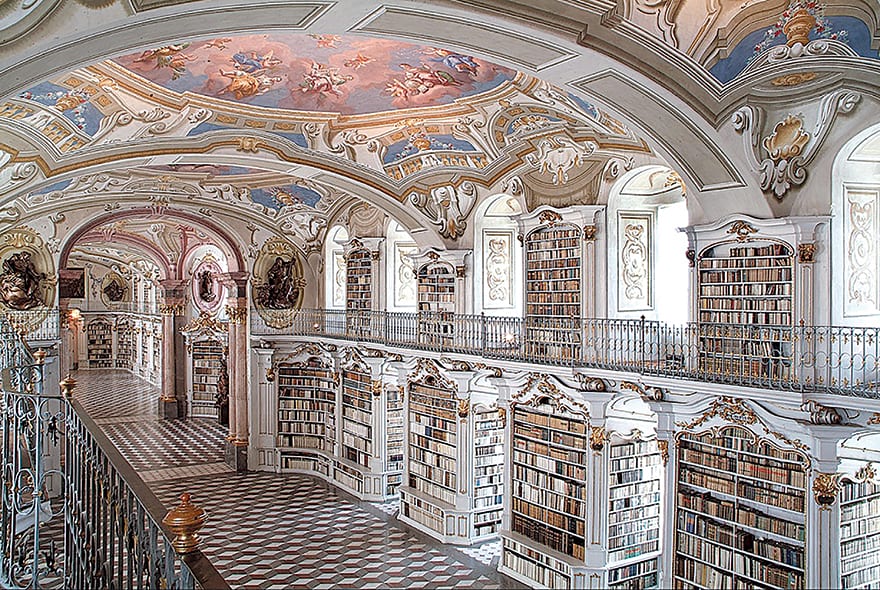Austria has a comprehensive network of libraries: 1,062 municipalities have a library. Hence libraries play a key role in the provision of literature and culture. Moreover, the Public Library Concept “The Library of the Future – The Future of Libraries” demonstrates that they are more than that: libraries are also centres of information and education and they have a social integrative function
The historical roots of the Austrian National Library reach back to the late Middle Ages. The earliest book that can still be found in the library today dates back to 1368, a medieval illuminated manuscript: the Gospel book by Johannes von Troppau.
After the end of the Second World War and under the country’s socio-political development, the Austrian National Library became an important symbol of Second Republic Austria and contributed to the country’s cultural identity. Starting from its historical centre on Josefsplatz it was able to expand its premises gradually.
In 1966 the library began to occupy a large part of the Neue Hofburg, and the Main Reading Room on Heldenplatz was opened, which continues to be used for this purpose to this day. With the opening of the book storage beneath the Burggarten in 1992, the library gained not only large storage areas but also an additional area for using new and large-format media on the top level.
The general renovation and modernisation of the Heldenplatz public library division were carried out in 2004: a glass lift connected the Main Reading Room and the Newspaper and Periodical Reading Room, and the facilities were made accessible to the disabled. A comfortable reading lounge was also incorporated into the portico.
In 2005 the Department of Music, Globe Museum, Esperanto Museum and Department of Planned Languages moved to a new location, in the adapted Palais Mollard at Herrengasse 9 in Vienna’s first district. The establishment of the Literary Museum in the former Austrian Court Archives (Hofkammerarchiv) at Johannesgasse 6 in the centre of Vienna constitutes the most recent architectural expansion. It opened in 2015.
With over 7.4 million items in its collections, the Austrian National Library is the largest library in Austria. It may also just be the most beautiful library in the world.
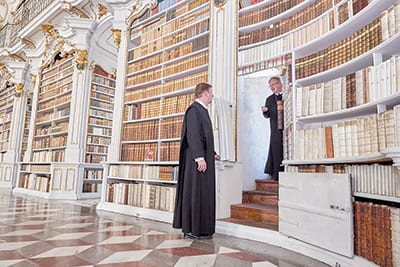
The Austrian National Library’s collections include everything from ancient texts written on papyrus, maps, paintings, manuscripts, ancient and rare books, photographs and even works in Esperanto. The library resides inside the Hofburg Palace which was home to the Habsburg dynasty that ruled the Austro-Hungarian empire.
In its seven reading rooms, the Modern Library offers 425 seats for reading – a further 147 seats are available for you to use in our comfortable communication lounge and the client areas outside the reading rooms.
There is free wireless Internet access in all reading rooms and the entire client area. All of the reading rooms are air-conditioned to ensure a pleasant working environment. Every reading room is equipped with a reference area, where the readers can find reference material sorted according to subject groups. The collection of reference materials primarily consists of the encyclopaedia, general reference books, manuals, bibliographies, specialised lexica, specialised dictionaries and language dictionaries, which can be researched via catalogue.
In 8 collections, important treasures of Austrian cultural heritage are preserved and made accessible to scholars. The collections are constantly growing, thanks to new acquisitions, and can be studied in reading rooms with the latest facilities.
The Collections of the Austrian National Library are divided into the following departments and archives.
With over 7.4 million items in its collections, the Austrian National Library, is the largest library in Austria. It may also just be the most beautiful library in the world
PICTURE ARCHIVES AND GRAPHICS DEPARTMENT
The Picture Archives and Graphics Department is Austria’s largest centre of pictorial documentation with holdings of approximately three million objects in different historical types of media.
DEPARTMENT OF MANUSCRIPTS AND RARE BOOKS
The historic core of the former Imperial Court Library: discover one of the world’s most important collections of manuscripts and prints.
MAP DEPARTMENT
The Map Department looks after about 295,000 sheet maps, around 45,000 geographical-topographical plans, 800,000 picture postcards, 700 globes, 100 reliefs and models of castles and about 83,000 volumes of specialist literature and atlases.

LITERARY ARCHIVE
The Literary Archive of the Austrian National Library collects lifetime and posthumous literary bequests from Austrian authors from the 20th century onwards and makes them available for academic study.
DEPARTMENT OF MUSIC
The music collection constitutes Austria’s biggest music archive and is both a modern academic research library and a place where the most valuable original musical manuscripts are kept.
DEPARTMENT OF PAPYRI
The papyrus collection, with about 180,000 items, is one of the largest of its kind in the world. In October 2001, the collection was included in the UNESCO Memory of the World Register of documentary heritage.
DEPARTMENT OF PLANNED LANGUAGES
Ever since it was founded in 1927, the Esperanto Museum of the Austrian National Library has held an extensive library, and in 1990 this was given the name Department of Planned Languages.
ARCHIVES OF THE AUSTRIAN FOLK SONG INSTITUTE
Huge collection of books and journals about folk songs, folk music, folk dancing and folk poetry in Austria.
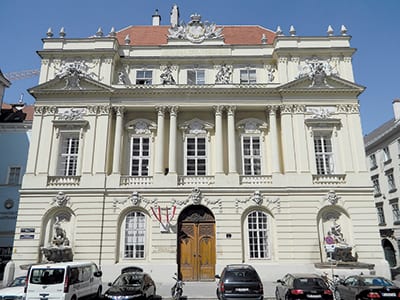
Austrian Academy Of Sciences Library
The library is a public access hub for writings of the Academy and universities from all over the world. Its total holdings include around 400,000 volumes, almost 12,000 scientific series and journals, as well as microfilms, CDs, DVDs and other electronic media
The Library, Archive and Collections provide information and service. In addition to more than 400,000 publications and archival materials dating back 150 years, rare historical manuscripts, centuries-old globes, historical images and many other valuable artefacts are also available to researchers and anyone interested.
The collections contain historical artefacts of the Austrian Academy of Sciences as well as a unique collection: the Woldan Collection. With over 11,000 valuable historical works on geography and cartography, the estate of the Viennese independent scholar Erich Woldan was one of the most important private collections in Austria. This collection is available to the public.
The collections contain historical artefacts of the Austrian Academy of Sciences as well as a unique collection available to the public
The historical travel reports, globes, world maps, atlases, individual folios and collections of topographical illustrations date back to the fifteenth century. The collections of the Academy also include legal writings and coin collections spanning many centuries as well as busts and artefacts relating to the history of the Academy.
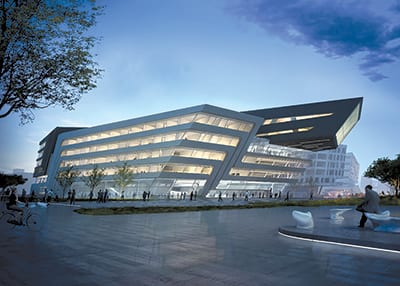
Vienna University Library
With 7.1 million books, 325,000 e-books, 80,000 e-journals, 7,400 print journals and over 1,200 databases, Vienna University Library is Austria’s largest library. At the same time, it is also the oldest university library in the German-speaking area, dating from 1365 and founded by Duke Rudolf
The library’s mission, then and now, is to serve the needs of students, faculty and researchers at Vienna University as well as the general public. It is universal striving as far as possible for comprehensive collection development.
The library is firmly committed to the preservation and opening of its holdings and cultural heritage in the broadest sense, including the generation of databases and other electronic resources. Therefore, it seeks to cooperate and coordinate with other scientific libraries in Austria and Europe.
The history of Vienna University Library has always been linked closely to that of Vienna University — starting with the foundation of the library. The so-called “publica libraria” was originally located at what today is Universitätsplatz in Vienna’s first district. The university was split into a number of faculties, and each faculty had its library.
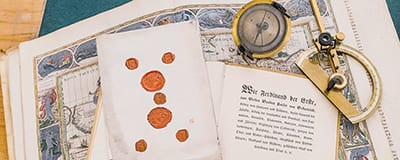 The library’s holdings grew significantly during the 15th century. Soon, each library had its own “bibliothecarius”, whose task was to protect the books from theft or damage. At the time, the books were chained to the shelves (“libri catenati”), and borrowing them was possible only in very special circumstances. Due to the Ottoman wars in Europe and several plague epidemics, the importance of Vienna University declined during the 16th and 17th centuries. Along with the university’s decline came the library’s decline, and the monastery of the Jesuits took over the last remains of the university library. It was only during the reign of Empress Maria Theresia that the university library was reopened. At the time it was also decreed that the university library was to answer directly to the state. This was not changed until 1 January 2000, when the university library was put under the control of the rector of Vienna University.
The library’s holdings grew significantly during the 15th century. Soon, each library had its own “bibliothecarius”, whose task was to protect the books from theft or damage. At the time, the books were chained to the shelves (“libri catenati”), and borrowing them was possible only in very special circumstances. Due to the Ottoman wars in Europe and several plague epidemics, the importance of Vienna University declined during the 16th and 17th centuries. Along with the university’s decline came the library’s decline, and the monastery of the Jesuits took over the last remains of the university library. It was only during the reign of Empress Maria Theresia that the university library was reopened. At the time it was also decreed that the university library was to answer directly to the state. This was not changed until 1 January 2000, when the university library was put under the control of the rector of Vienna University.
The library is strongly committed to the preservation and opening of its holdings and cultural heritage in the broadest sense, including the generation of databases and other electronic resources
As the numbers of both holdings and users grew steadily, an extension had to be built for the library in the early 19th century. In 1884, the library followed the university into its new building on Ringstrasse, but the lack of space still remained.
During World War II, the books were relocated to bomb shelters in Lower Austria, but many books were lost or damaged during transport and due to inadequate storage conditions or other complications. In 1951, the reconstruction of the damaged university building was complete; the large reading room’s floor had been raised to gain room for extra storage space.
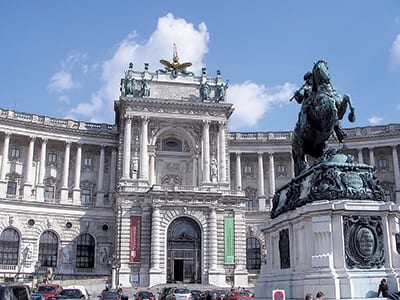
The World’s Largest Monastery Library
Admont Abbey is a Benedictine monastery located on the Enns River in the town of Admont, Austria. It is the oldest remaining monastery in Styria and contains the largest monastic library in the world
The abbey is known for its Baroque architecture, art, and manuscripts. While the abbey itself was completed in 1074, the library (late Baroque) was not completed until 1776. It was commissioned by Abbot Matthäus Offner (reigned 1751-1779) and built by the Graz Master Builder Josef Hueber (1715-1787).

The library is divided into three sections and has an overall length of 70m, a width of 14m and 11m in height (12.7 m in the central cupola). Adorning the ceilings are seven frescoes by Bartolomeo Altomonte who was 80-years-old at the time and completed the murals over the summer months of 1775 and 1776. The frescoes depict the steps in ‘man’s exploration of thinking and speaking from the sciences to Divine Revelation in the central cupola’.
Master Baroque sculptor Josef Stammel made the sculptures in the library. Particularly famous is The Four Last Things, a group of four oversized presentations of Death, the Last Judgement, Heaven and Hell. The library collection comprises some 200,000 volumes. The most valuable treasures are the more than 1,400 manuscripts (the earliest from the 8th century) and the 530 incunabula (early printed books before 1500). Of the 1000 medieval manuscripts that are preserved in the Admont Benedictine monastery, some of which were also made there, the majority of the Gothic period dates back to the Middle Ages. In the Admonter scriptorium, the Gothicization of the Carolingian Minuskel is visible at the end of the 12th century. This book, which has been in use throughout the whole of Europe since the time of Charlemagne, has gradually changed. The scribes begin to “bend” the letters and increasingly use the “broken” Gothic texture in the calligraphic writings.
The library collection comprises some 200,000 volumes. The most valuable treasures are the more than 1,400 manuscripts (the earliest from the 8th century) and the 530 incunabula (early printed books before 1500
Since the completion of the library hall in 1776, no comparable work has ever been carried out: in three major working phases during the years 2004 to 2008, all the stone and metal collections, the ceiling frescoes, the entire sculptural jewellery and all wood components were restored. The whole book stock of about 70,000 items was cleaned and examined for its damages. Over 5,000 books have been restored.

The restoration work was urgently necessary as parts of the building’s structure, as well as a considerable part of the books, were endangered in their further existence. The century project for the general restoration of the Admont monastery library was under the supervision of the Federal Office for Contemporary Art.
The architectural and art-historical jewel was thus secured for further generations. Since March 2008, the world’s largest monastic library has been gloriously glittering.
